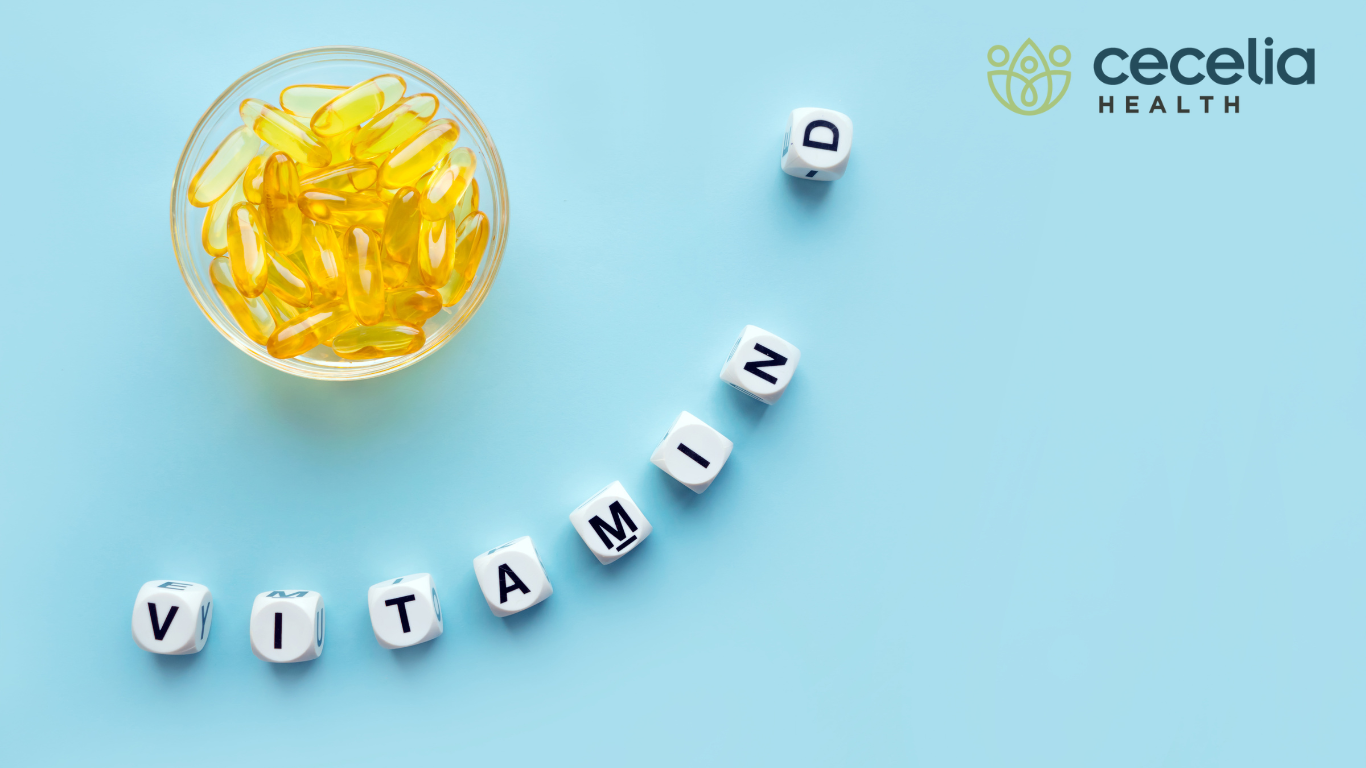You have probably heard that vitamin D is important and many of us may have been told by our doctors that we need to take a vitamin D supplement. According to the US Centers for Disease Control and Prevention and the National Center for Health Statistics, about one-quarter of the US population is at risk of not having enough vitamin D. Low levels of vitamin D have been linked to fatigue, muscle weakness and bone disease among other problems.
Where do we get Vitamin D?
Our bodies can do amazing things and one of these is that it can make vitamin D. Vitamin D is a unique vitamin that our bodies can produce when exposed to sunlight. For this reason, it is often called the sunshine vitamin. When we are exposed to sunlight, the sun’s energy turns a chemical in your skin into Vitamin Dᶾ, which is carried to your liver and then your kidneys to transform it to active Vitamin D.
Vitamin D’s best-known function is to help keep bones healthy. Our bodies can only absorb calcium when vitamin D is present, therefore it is needed for strong bones. Low levels of vitamin D have been linked to stress fractures and other problems related to bone health including osteoporosis. If we do not have adequate exposure to sunlight, we may not be producing enough Vitamin D. For some people, getting 10 to 30 minutes of midday sunlight on the face and arms a few times a week may allow their body to produce enough of the vitamin, but for others this may not be doable.
The following factors may interfere with the body’s ability to make vitamin D:
- Chronic illness or disability that prevents regular sun exposure
- Winter months and colder climates where getting outdoors is difficult
- Skin color: Individuals with a darker skin produce less vitamin D with the same amount of sunlight exposure than individuals with lighter skin color
- Age: Older people are less efficient at making D3 and less likely to go outside in the sun
- Religion or culture: People whose beliefs require them to cover most of their skin and/or face usually do not receive adequate sunlight for their skin to make vitamin D
- Avoidance of the sun and use of sunscreen: Fears of skin cancer and skin aging mean people spend less time in the sun
All of these factors which prevent sun exposure may explain why vitamin D deficiencies are very common. In addition, a poor intake of vitamin D through the diet may also contribute to low vitamin D levels.
Which foods can we include in our diet to get in some Vitamin D?
Few foods are naturally rich in vitamin D3. The best sources are the flesh of fatty fish and fish liver oils. Smaller amounts are found in egg yolks, cheese, and beef liver. Certain mushrooms contain vitamin D2, there are commercially sold mushrooms which are intentionally exposed to high amounts of ultraviolet light. Many foods and supplements are fortified with vitamin D like dairy products and cereals.
Vitamin D rich foods to add to your diet:
- Cod liver oil
- Salmon
- Swordfish
- Tuna fish
- Orange juice fortified with vitamin D
- Dairy and plant milks fortified with vitamin D
- Sardines
- Beef liver
- Egg yolk
- Fortified cereals
Since it may be hard to get in adequate amounts of these foods on a regular basis, for most people, it may be necessary to take a supplement to get enough vitamin D.
What are the recommended amounts of Vitamin D?
The Recommended Dietary Allowance for vitamin D provides the daily amount needed to maintain healthy bones and normal calcium metabolism in healthy people. It assumes minimal sun exposure.
RDA: The Recommended Dietary Allowance for adults 19 years and older is 600 IU (15 mcg) daily for men and women, and for adults >70 years it is 800 IU (20 mcg) daily.
UL: The Tolerable Upper Intake Level is the maximum daily intake unlikely to cause harmful effects on health. The UL for vitamin D for adults and children ages 9+ is 4,000 IU (100 mcg).
How do you know if you should take a vitamin D supplement?
Have your doctor do bloodwork to determine if you are deficient in vitamin D. Your bloodwork results will determine if your vitamin D levels are within the normal range. If your vitamin D is low, your doctor may prescribe a prescription strength vitamin D or they may tell you to take an over-the-counter supplement. It is important to note that vitamin D can reach toxic levels in the body, so it is important to discuss the dosage you are taking with your doctor.
Benefits of Vitamin D
As mentioned earlier, vitamin D’s main stage is its importance for bone health and the prevention of bone fractures and osteoporosis. Besides the role it plays in bone health, it has the potential to help with many other diseases. Researchers have been looking at other areas to see where vitamin D can help with disease prevention and treatment. Observational studies have shown that people who live in sunnier climates and have more sun exposure have less vitamin D deficiency and also have lower rates of certain diseases. This has led to ongoing studies looking at vitamin D and its benefits in type 2 diabetes, heart disease, autoimmune diseases such as Multiple Sclerosis and type 1 diabetes, immune diseases such as the flu and the common cold, and how it can help prevent cogitative decline. With all of vitamin D’s potential benefits, it is worth a discussion with your doctor to ensure you have your vitamin D levels checked and to supplement your diet if needed to keep your levels within a normal range.
